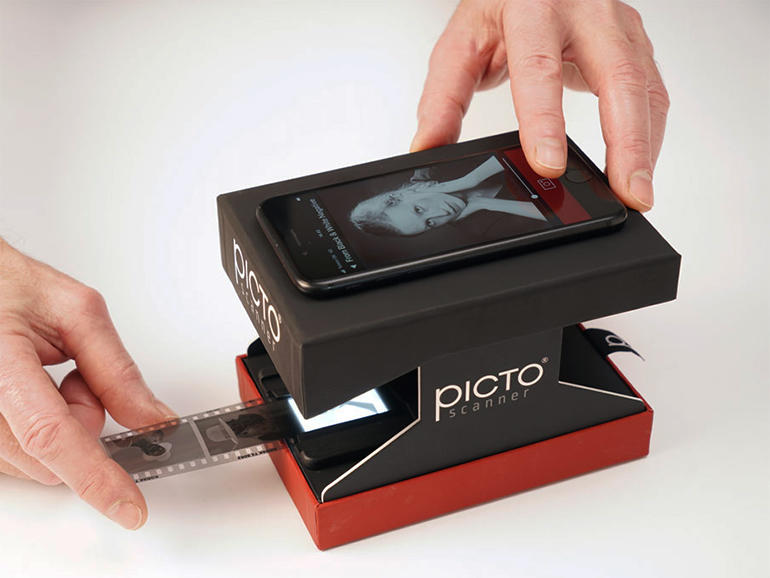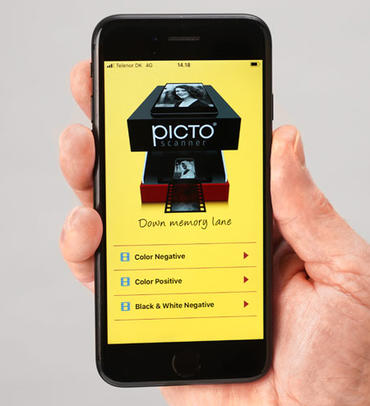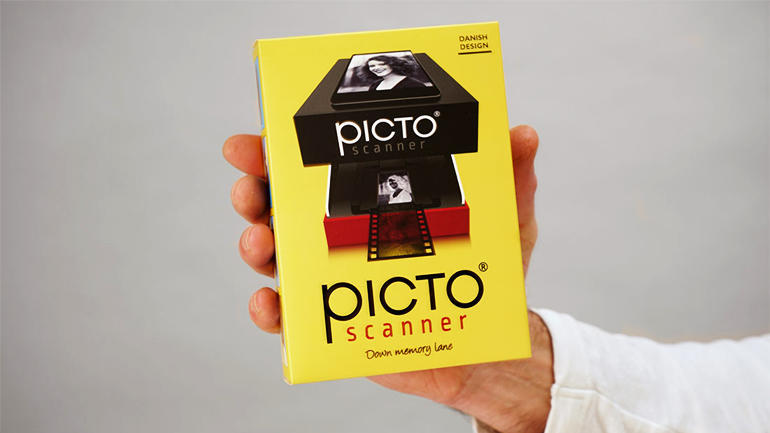Scanning film slides and negatives might sound like a niche requirement these days, but the need can crop up in all sorts of situations, and when it arises, a simple and affordable solution can get an acceptable job done.
The £34.31 (from Amazon) PictoScanner accepts slides or negatives, and is designed to be used with a smartphone; free apps are available for Android and iOS to manage the process. The PictoScanner itself is a battery-powered lightbox, made almost entirely of cardboard, that tucks away into its own little box for storage. As a purchase for the office or home it’s almost a no-brainer — if it works, of course.

PictoScanner is a battery-powered (2x AA) cardboard lightbox that accepts 35mm film slides and negatives. Scanning is carried out via your smartphone’s camera, managed by a free PictoScanner app.
Image: PictoScanner
A certain amount of self-assembly is required before you can get started with the PictoScanner. A clearly written and well-illustrated printed manual tells you everything you need to do, and in just a couple of minutes the lid of the box becomes a stand for your phone, with a small cut-out ready to accommodate your phone’s camera lens. You’ll need to supply a couple of AA batteries which provide a backlight for your slides or negatives, and there’s an on-off switch for the light on what becomes, after assembly, the underside of the stand.


Simple PictoScanner apps are available for Android and iOS, but you may need to use a more capable image editor to refine your scans.
Image: PictoScanner
I tested the PictoScanner with the Android app, which offers a choice of three photographic types: colour negative, colour positive, and black-and-white negative. Selecting the appropriate input fires up the camera; the frame initially extends beyond the slide or negative you want to capture, and you’ll need to zoom in.
Once a photo is taken the app moves on to a basic photo editor. Here you can add a frame, apply a filter, give your image rounded rather than squared-off edges, and adjust exposure and contrast. Other, far better, free photo-editing apps are available, including those that come with handsets, and if you want to crop the image you’ll need to resort to one of these.
That’s all there is to it. The PictoScanner is basically just a lightbox, and the app is not particularly well featured. Still, the lightbox itself is easy to assemble, and the app is straightforward to use for basic image digitising. The app could be more feature-rich, but with so many editing apps available perhaps there’s an argument for keeping it simple here.
Top ZDNET Reviews
RECENT AND RELATED CONTENT
Working from home tech: We review an ultraportable printer and scanner
What’s inside Gewirtz’s home office? 20 years of refinement and evolution
Phones to expect in 2021: Galaxy S21, iPhone 13, and more
Best phone to buy in 2021
ZDNet Recommends: The best products for every office
Read more reviews


